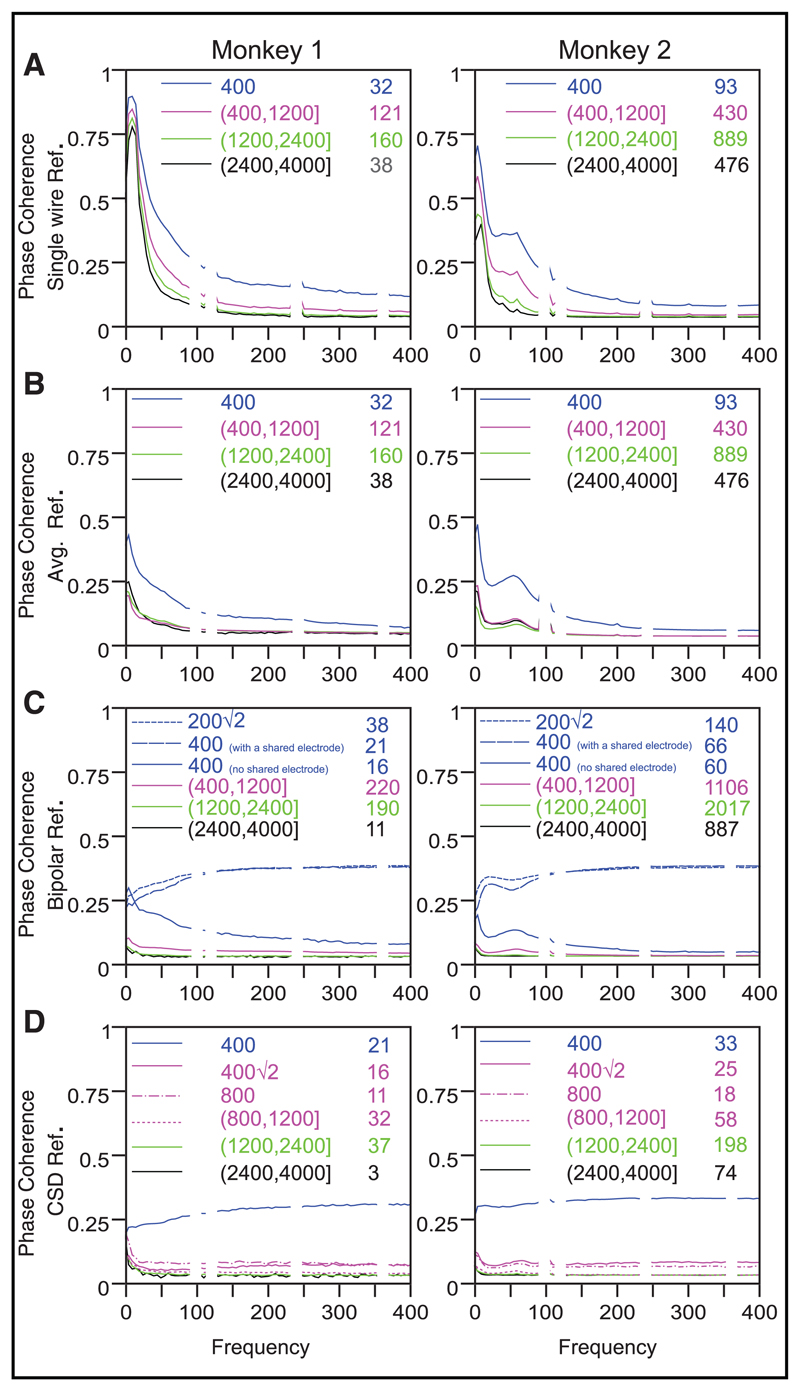Figure 4.
Phase coherence after the signals are referenced using different schemes. The insets show the interelectrode distance ranges and the number of electrode pairs in each range. We chose the baseline period between 300 ms and 100 ms interval before stimulus onset such that the analysis durations were the same for baseline and stimulus conditions (200–400 ms after onset; results are shown in supplementary Figure 4); similar results were obtained if the baseline period was chosen between 500 ms and 0 ms instead. (A) Single-wire reference. (B) Average reference. (C) Bipolar reference. (D) CSD reference. For bipolar and CSD reference schemes, we show some additional ranges (0.2√2 for bipolar, 0.4√2 and 0.8 mm for CSD) at which the computed referenced signals share a common component, which largely determines the coherence and phase differences. For the bipolar reference scheme, we also split the 0.4 mm distance range into two cases—one where the bipolar pairs share a common component and other where they do not.

